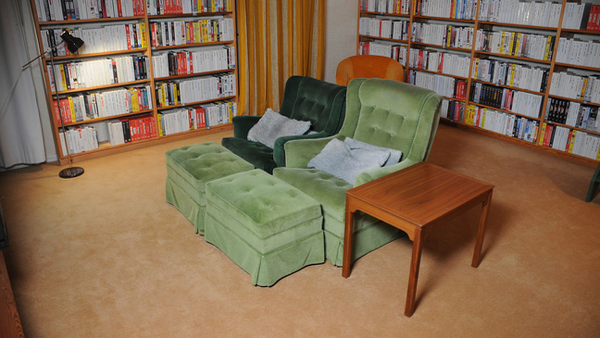Movie review by Greg Carlson
Jane Magnusson and Hynek Pallas’ “Trespassing Bergman,” an often playful deconstruction of the work and life of the legendary Swedish filmmaker through the eyes of a murderer’s row of auteurs, is a guaranteed ticket for the hardcore cinephile. Stacked with observations from Tomas Alfredson, Woody Allen, Wes Anderson, Harriet Andersson, Pernilla August, Francis Ford Coppola, Wes Craven, Robert De Niro, Claire Denis, Laura Dern, Daniel Espinosa, Michael Haneke, Holly Hunter, Alejandro Gonzalez Inarritu, Takeshi Kitano, John Landis, Ang Lee, Alexander Payne, Isabella Rossellini, Martin Scorsese, Ridley Scott, Lars von Trier, and Yimou Zhang, the film’s real superstar is Bergman’s Faro Island compound — where the best parts of the movie take place.
Despite the black hole density of the concatenation of talking heads, Magnusson and Pallas don’t skimp on the film clips, photographs, and archival content of the indefatigable Bergman. Some of the behind-the-scenes footage has reportedly never been publicly available, offering yet another magnetic pull for fans. Career-spanning highlights from “Summer with Monika,” “The Seventh Seal,” “Wild Strawberries,” “The Virgin Spring,” “Persona,” “Scenes from a Marriage,” “Autumn Sonata,” “Fanny and Alexander,” and others are punctuated with insights that range from predictable (the neverending question asking whether “The Seventh Seal” is overrated) to the fresh (Haneke on Bergman’s use of violence).
Given the movie’s number of participating filmmakers, every viewer is likely to choose favorites. The ones visiting Faro, however, have the clear advantage, since the cameras capture their reactions to the eerie intimacies of Bergman’s pristinely preserved personal spaces. Guests remove shoes at the door and select a pair of slippers. Some, like Inarritu, examine the master’s graffiti on tabletop and wall chart, speculating on the possible meaning of the inscrutable hieroglyphics. Hilariously, Alfredson quips that being there feels like going to the “not fun house.” Denis, subjected to a loudspeaker looping a trespass warning, seems unnerved and uncomfortable. Landis, the odd man out, makes himself right at home.
The interlopers delight in poking through the well-organized shelves of Bergman’s famous, massive, personal videotape library, pulling cassettes of eye-catching titles and spotting surprising Hollywood blockbusters and offbeat genre flicks. Sometimes, Bergman’s handwritten notes adorn the cases — Haneke appears to get a real kick out of receiving a four-out-of-five star rating for “The Piano Teacher.” Magnusson and Pallas also make the most of unscripted, unguarded moments with their interviewees. It’s a glimpse behind the curtain, as walking encyclopediae Anderson and Scorsese test out ideas, fact-check, and practice their soundbites before the “real” recording begins.
For better or worse, the film’s most engaging interview is von Trier, who wears his heart on his sleeve in a set of passive-aggressive, love-hate speculations on his cinematic hero. Even so, the Danish director, unnamed but accused of sexual harassment and bullying by Bjork, and Allen, accused of sexual assault by Dylan Farrow, now cast dark shadows over the document. While Allen’s comments avoid the kind of ribald vulgarities and incitements on display in von Trier’s theories about Bergman’s own libidinous obsessions, the presence of the two moviemakers revises those parts of the film that deliberately address the ways in which Bergman dealt with sex onscreen and off.
“Trespassing Bergman” showed this past week as part of the Minneapolis St. Paul International Film Festival and is available to view on-demand.
